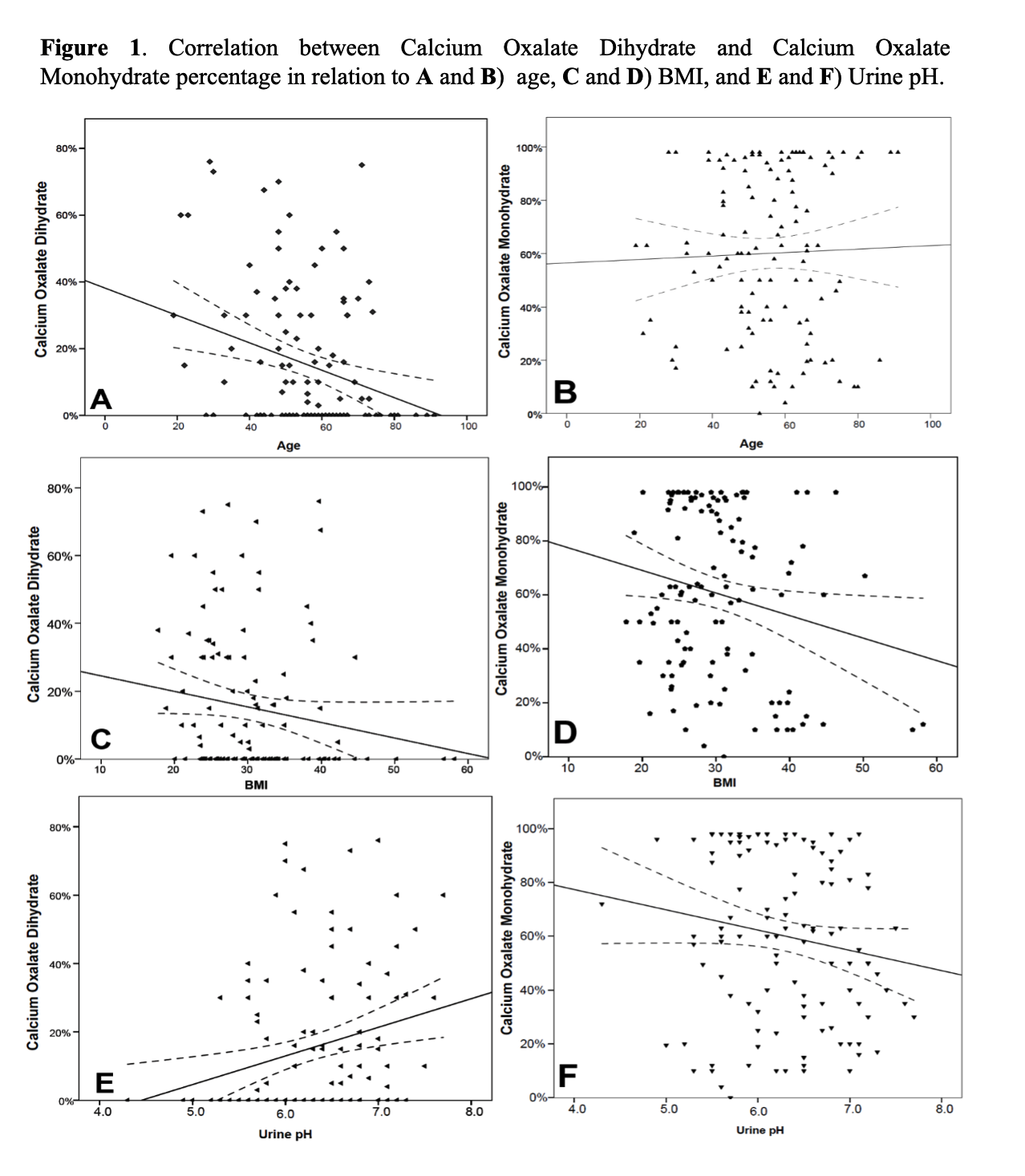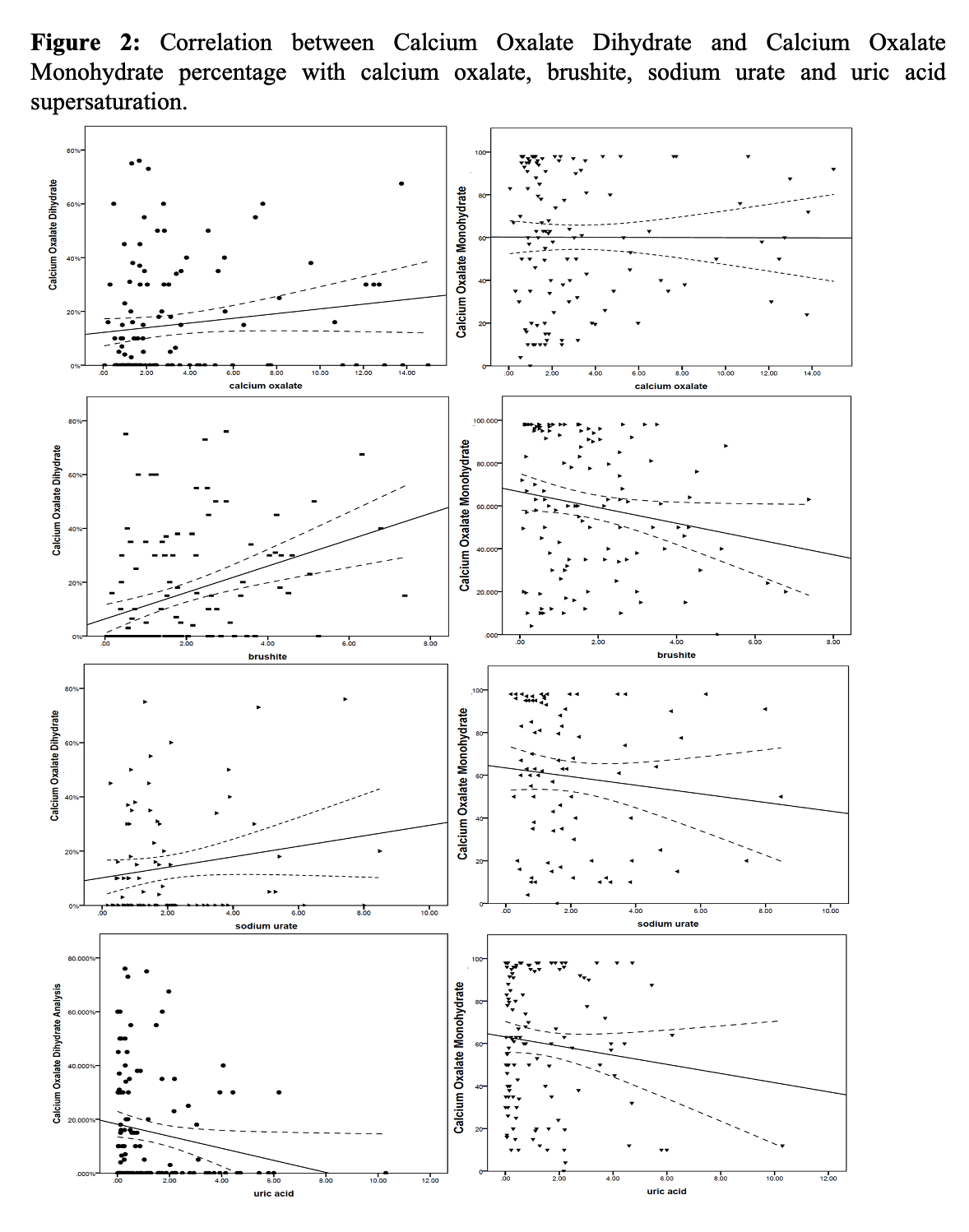Back
Poster, Podium & Video Sessions
Moderated Poster
MP26: Stone Disease: Epidemiology & Evaluation I
MP26-10: Clinical and Metabolic Factors Affecting Relative Proportion of Calcium Oxalate Monohydrate and Dihydrate in Pure Calcium Oxalate Stones.
Saturday, May 14, 2022
10:30 AM – 11:45 AM
Location: Room 225
Mohammad Hout*, Vedant Acharya, Madhumita Parmar, Ruben Blachman Braun, Jonathan Katz, Robert Marcovich, Hemendra Shah, Miami, FL
- MH
Mohammad Hisham Hout, MD
University of Miami/Jackson Memorial Hospital - - Miami, FL
Poster Presenter(s)
Introduction: Calcium oxalate stone are the commonest variety of urinary calculi. Patients contain varying amount of its sub-types- calcium oxalate monohydrate and dihydrate. Few studies from past demonstrate varying metabolic defects in patients with both sub-types. The aim of present study was to study influence of various clinical and metabolic factors on relative proportion of calcium oxalate monohydrate and dihydrate in pure calcium oxalate stones.
Methods: We retrospectively examined stone analysis report of all patients who underwent endourological procedure for stone removal at our center from Jan 2017 to December 2019. Stones made of pure calcium oxalate with varying proportion of its subtypes were identified. Patient with combination of calcium oxalate with other components were excluded from study. Chart review was performed of all this patient to identify those who had 24-hour urinary stone risk profile done within 3 month of stone analysis and prior to start of medical management of stone. Statistical analysis was performed using SPSS 24. Correlational analysis between stone composition and clinical and metabolic variables was performed with the Spearman test.
Results: Of 120 calcium oxalate stones, 66 contained > 60% monohydrate and 8 contained > 60% dihydrate. The mean age in patients with dihydrate stone was 39.6 + 17 and monohydrate was 55.3 + 14.6. (P=0.002). Correlation analysis suggested that age, BMI and urinary Ph. Calcium oxalate saturation, brushite saturation and uric acid saturation were found to have significant co-relation with percentage of calcium oxalate dihydrate or calcium oxalate monohydrate stone composition. (figure 1 and 2)
Conclusions: Calcium oxalate dihydrate stones former are younger and have lower BMI than those with monohydrate stones. Similarly as urinary Ph become more alkaline, the relative proportion of dihydrate increases.
Source of Funding: none


Methods: We retrospectively examined stone analysis report of all patients who underwent endourological procedure for stone removal at our center from Jan 2017 to December 2019. Stones made of pure calcium oxalate with varying proportion of its subtypes were identified. Patient with combination of calcium oxalate with other components were excluded from study. Chart review was performed of all this patient to identify those who had 24-hour urinary stone risk profile done within 3 month of stone analysis and prior to start of medical management of stone. Statistical analysis was performed using SPSS 24. Correlational analysis between stone composition and clinical and metabolic variables was performed with the Spearman test.
Results: Of 120 calcium oxalate stones, 66 contained > 60% monohydrate and 8 contained > 60% dihydrate. The mean age in patients with dihydrate stone was 39.6 + 17 and monohydrate was 55.3 + 14.6. (P=0.002). Correlation analysis suggested that age, BMI and urinary Ph. Calcium oxalate saturation, brushite saturation and uric acid saturation were found to have significant co-relation with percentage of calcium oxalate dihydrate or calcium oxalate monohydrate stone composition. (figure 1 and 2)
Conclusions: Calcium oxalate dihydrate stones former are younger and have lower BMI than those with monohydrate stones. Similarly as urinary Ph become more alkaline, the relative proportion of dihydrate increases.
Source of Funding: none



.jpg)
.jpg)